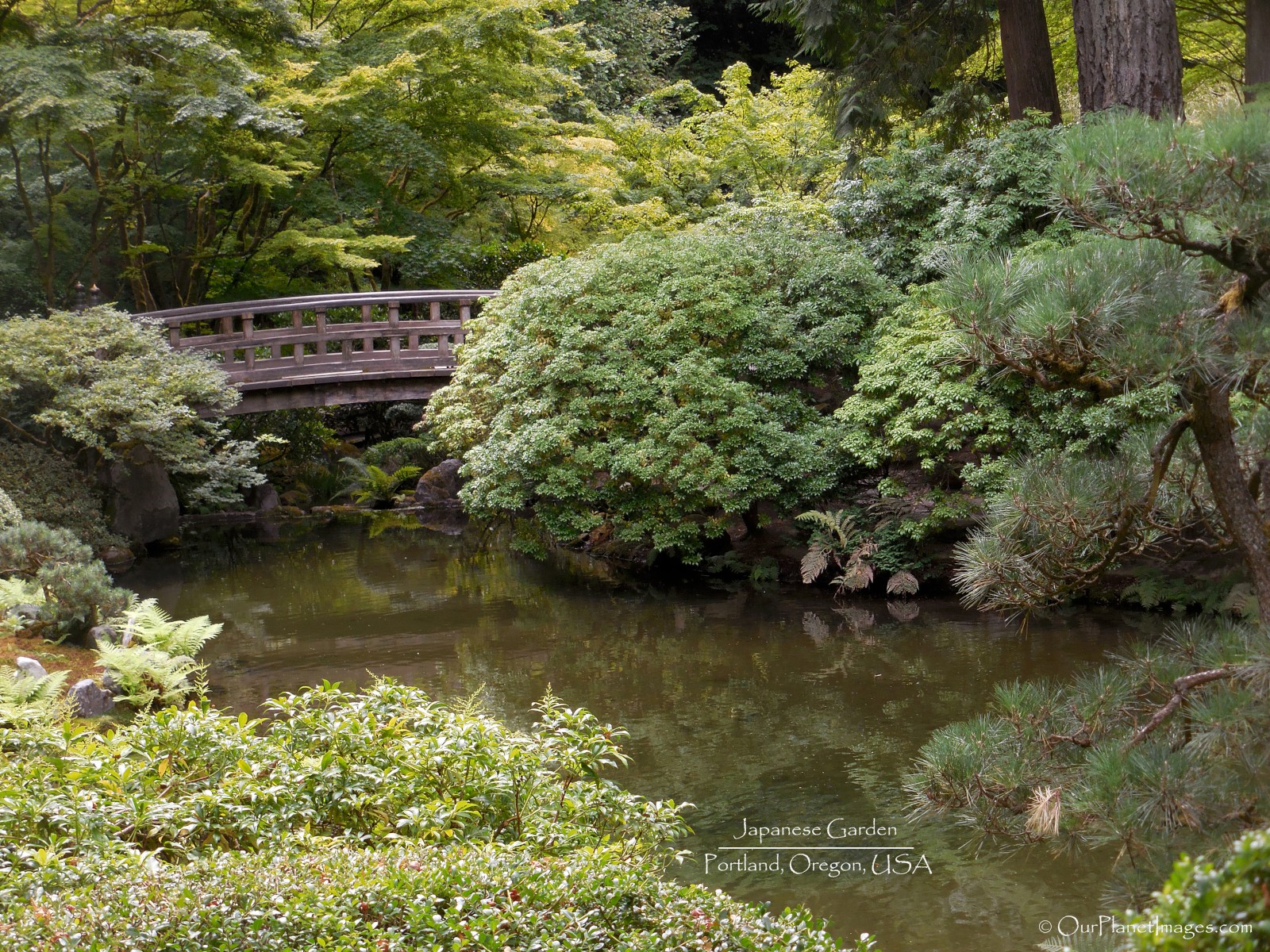The Portland Japanese Garden has been proclaimed as one of the most authentic Japanese Gardens outside of Japan. The garden is 5.5 acres of meticulously maintained tranquility. Everywhere look and around every corner is another perfect view of what you would expect from a Japanese Garden.
A Japanese Garden is intended for visitors to enter an environment where they can find peace and harmony away from the rapid pace of life. The Portland Japanese Garden accomplishes this almost instantly and as I wondered through the garden if felt like the most beautifully natural setting that I had been but in Japanese Gardens nothing is left to nature. Everything is purposefully designed and everything has a meaning.
For me and for most visitors the purpose and meaning aren’t what draws me to visit a Japanese Garden. What I like most about visiting a Japanese Garden is being in a peaceful environment surrounded by natural elements.
That being said, I think the only way to present a Japanese Garden is to show the elements of a Japanese Garden. For that reason, I have separated my photos by elements of a Japanese Garden to illustrate each of these elements but all of these elements are so intertwined that each photo will have multiple elements within the photo.
Water (symbolizes renewal, calm, wonder and continuity)
Water is used throughout the garden in several different forms. There are beautiful waterfalls, ponds and slow flowing creeks and all of them are landscaped with plants, stones and sometimes lanterns.
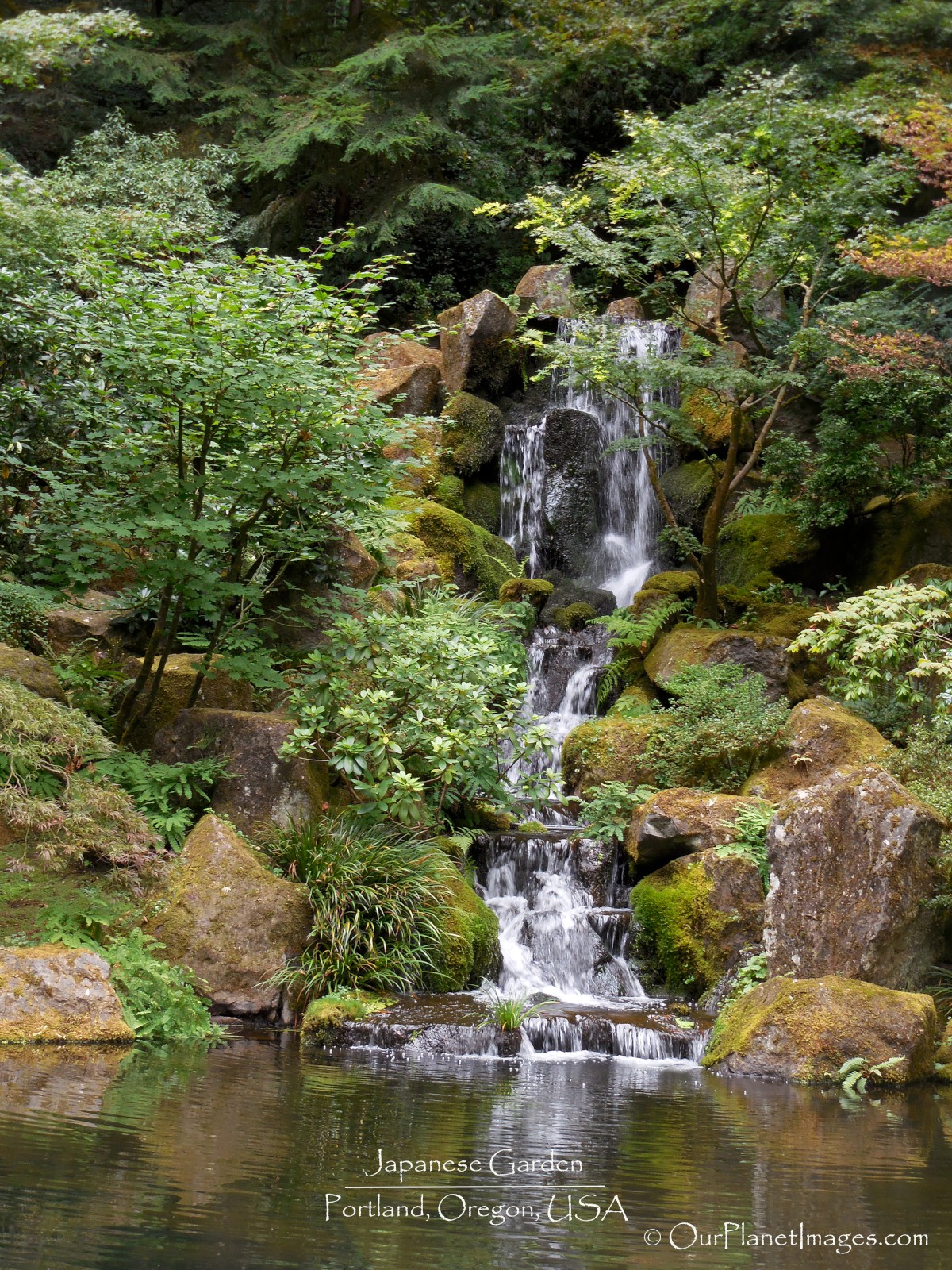
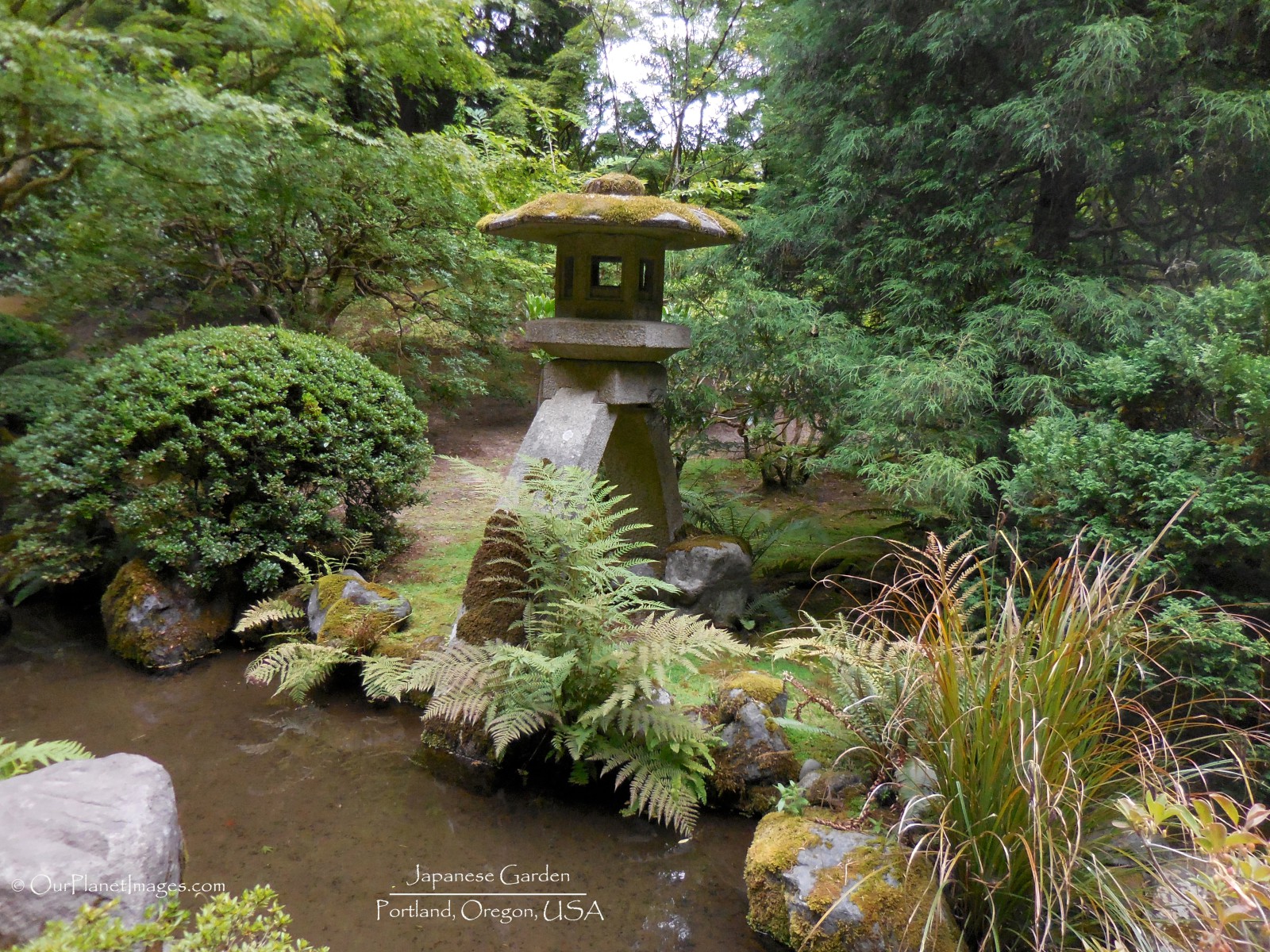
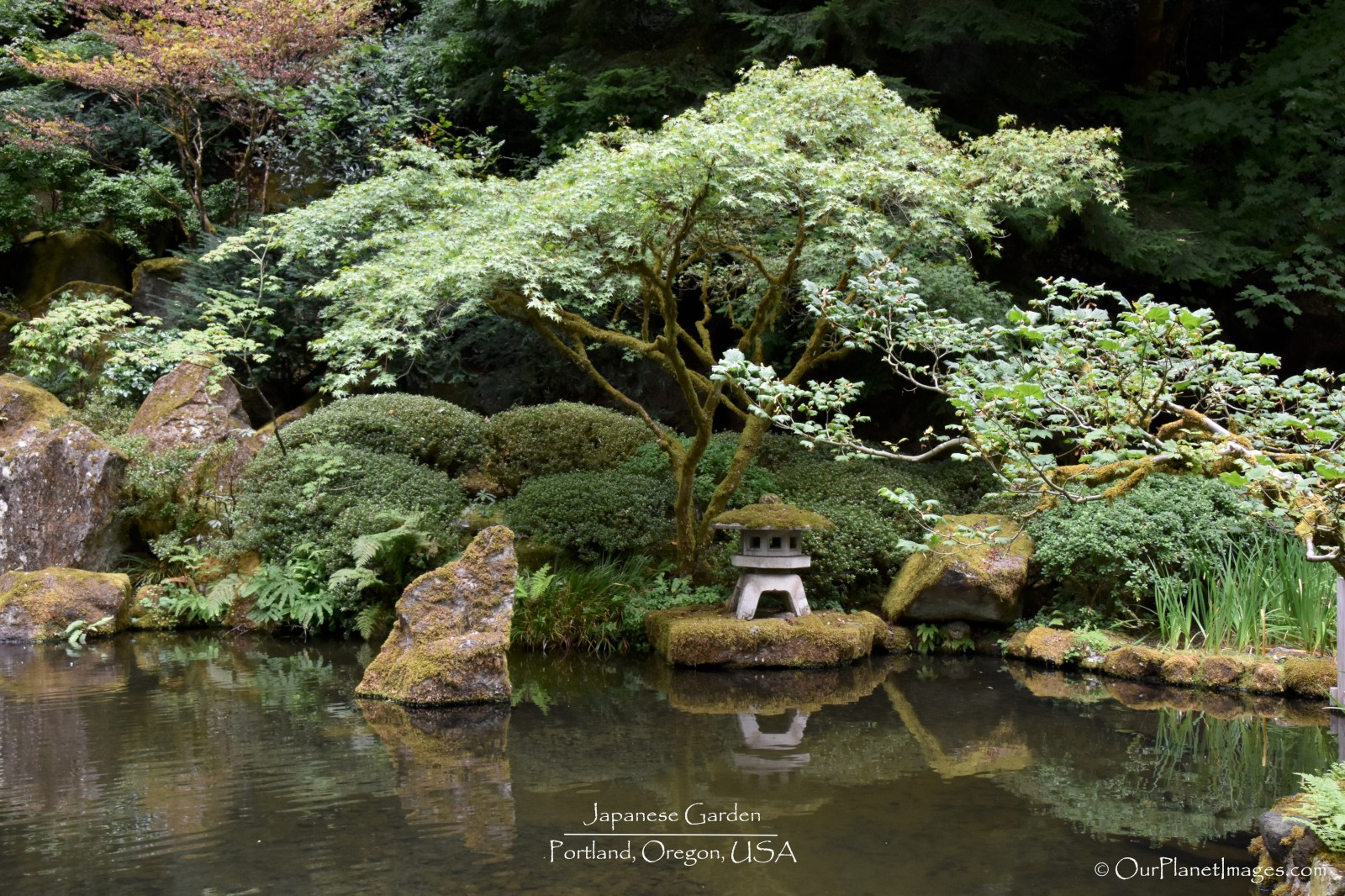
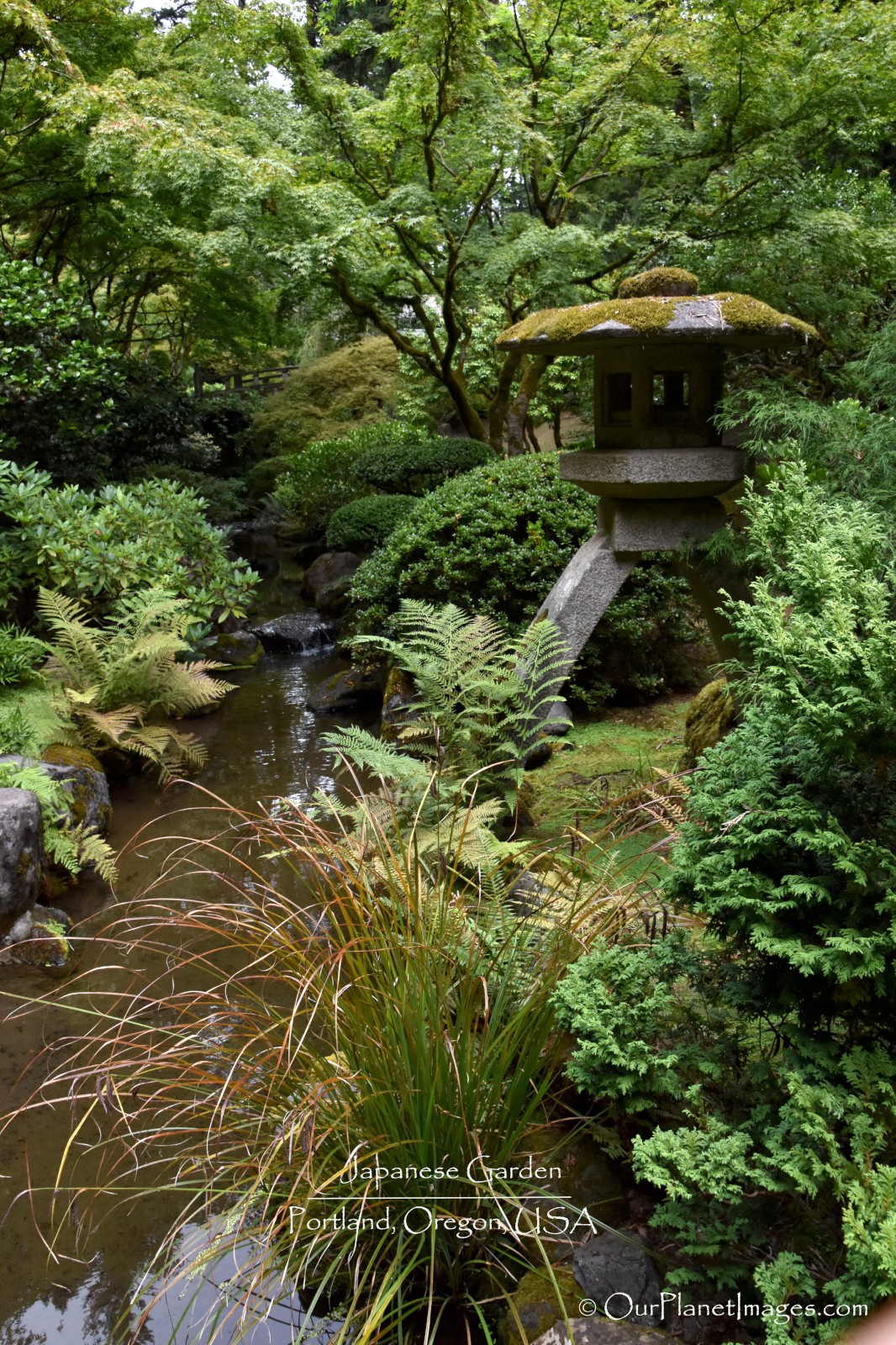
Lanterns (used to light the pathway)
Lanterns were not originally part of the Japanese Garden but when the Tea Garden became part of the Japanese Garden they were needed to light the pathway for the tea ceremony which is often held at night.
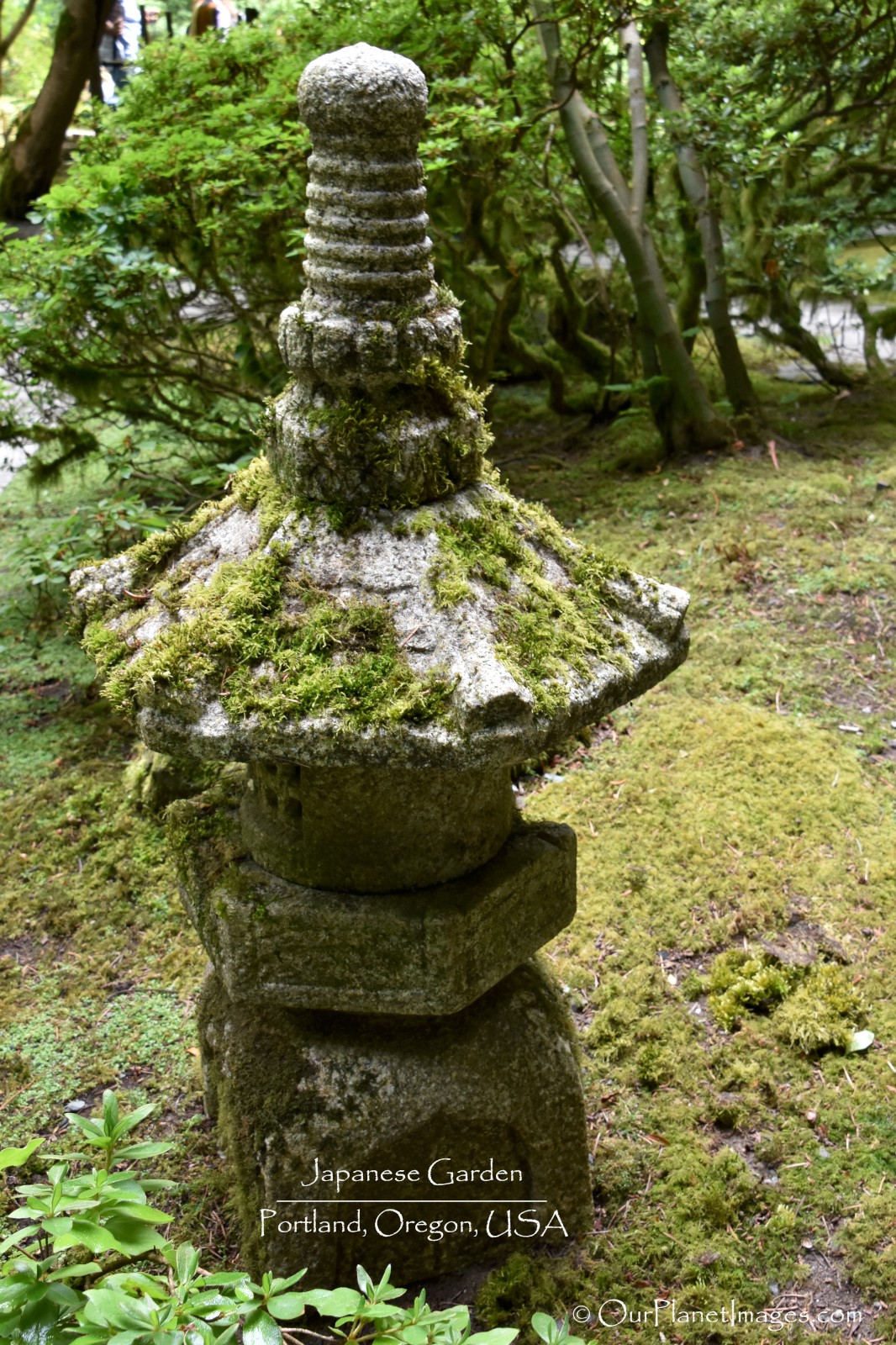
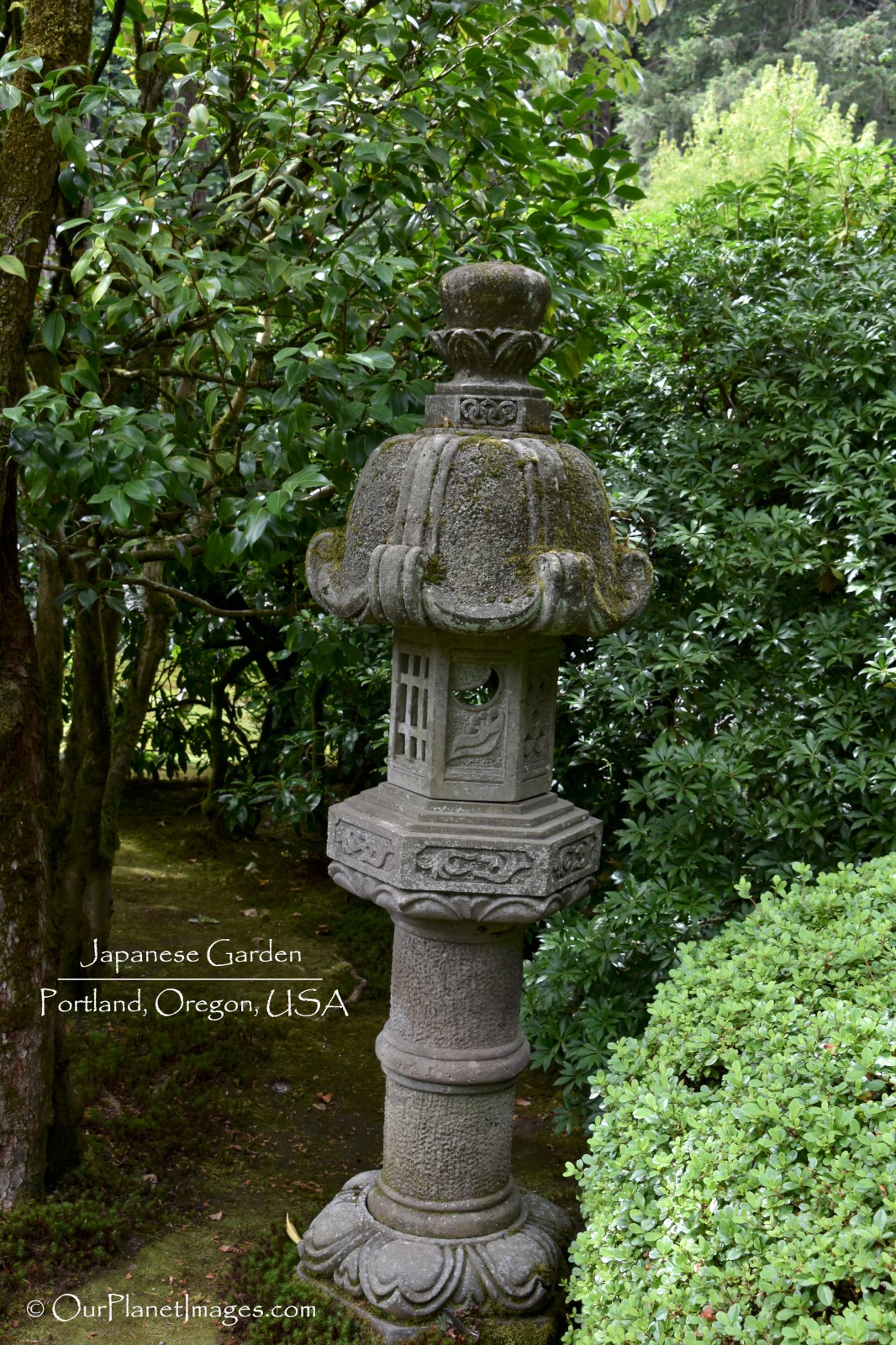
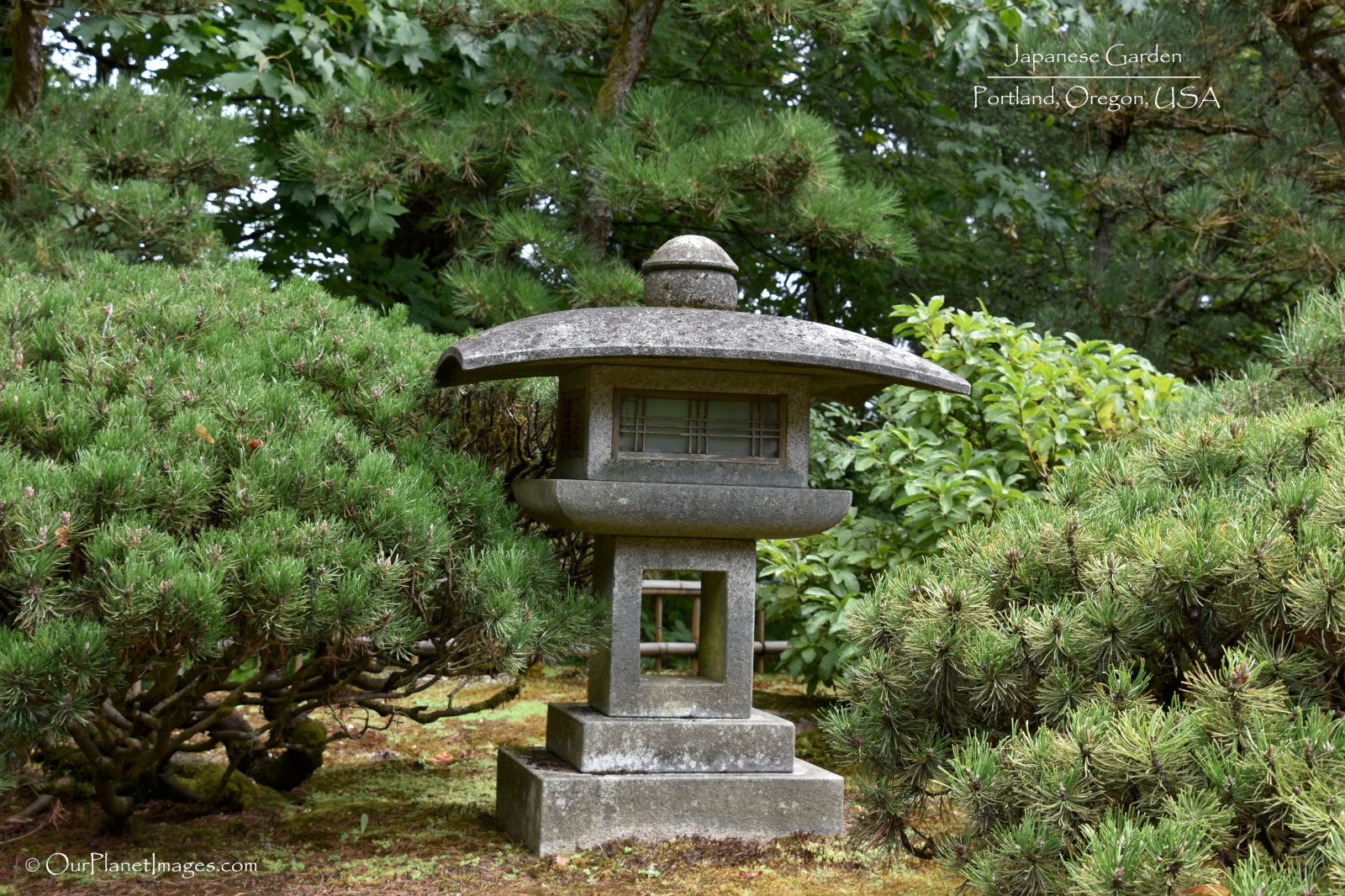
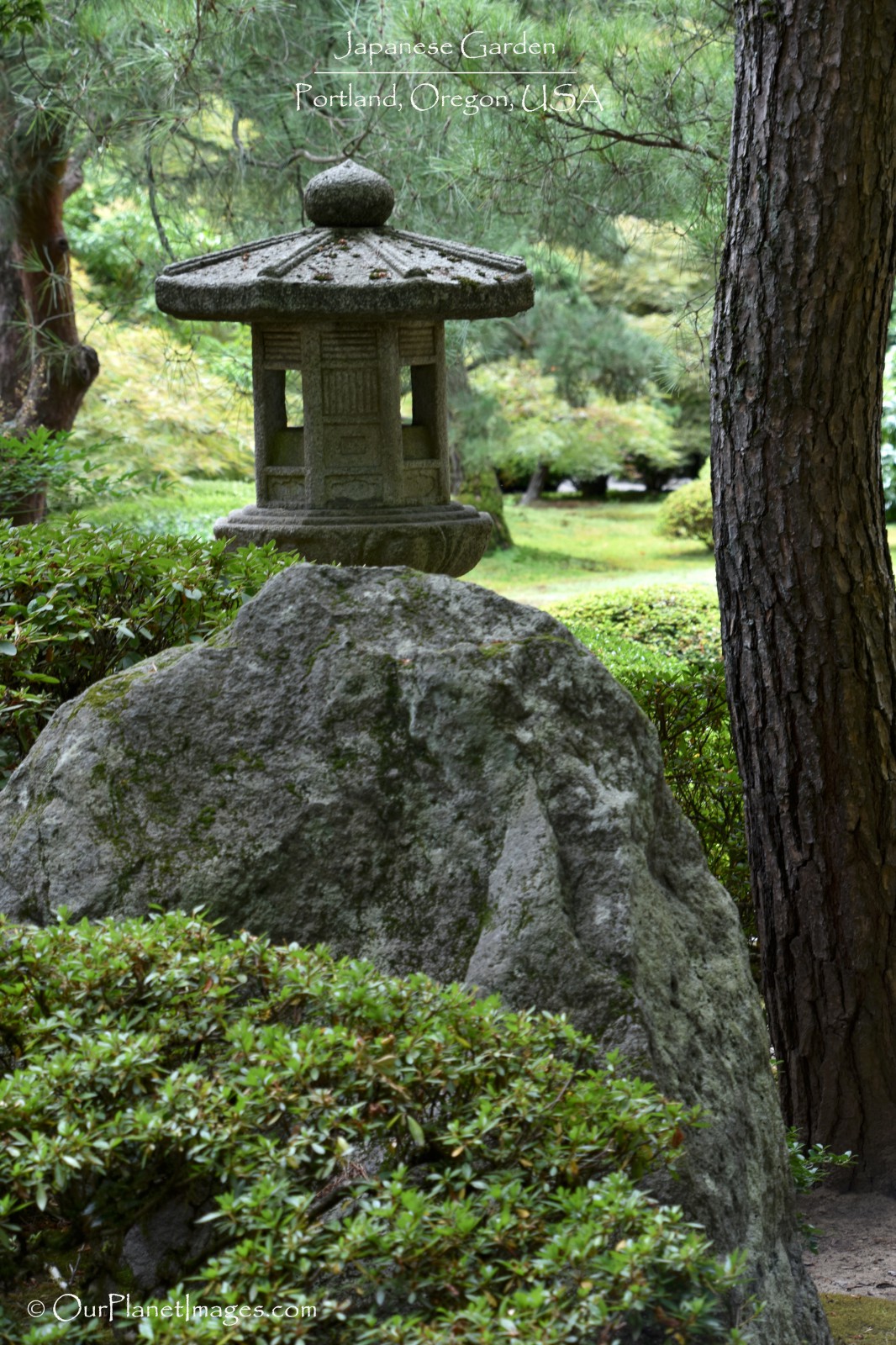
Stone and Sand (symbolizes longevity and the forces of nature)
As mentioned before, stone is found throughout the entire garden but it is also used as part of the sand garden. The sand garden is a type of garden that has different meaning depending on how the sand is raked.
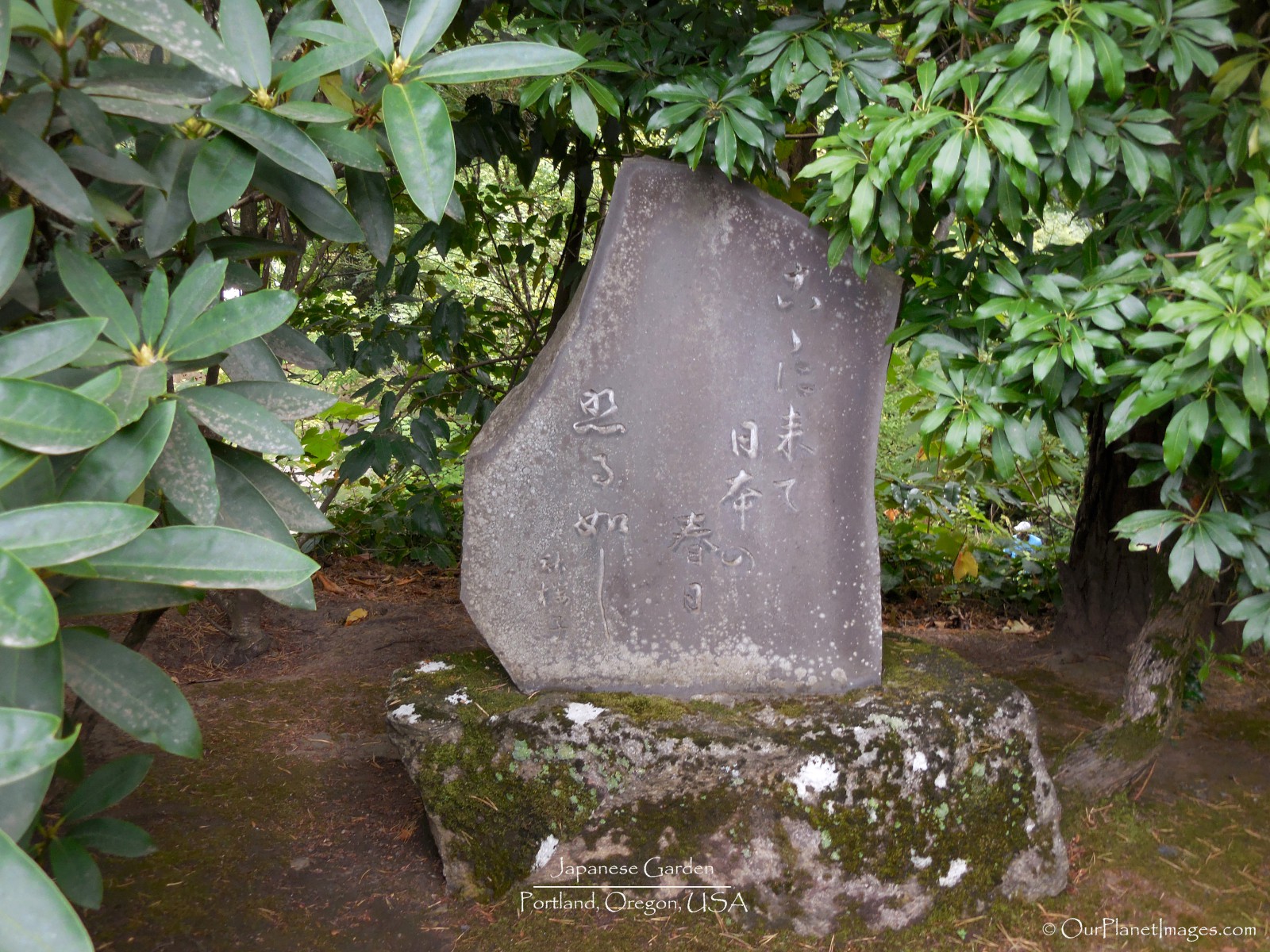
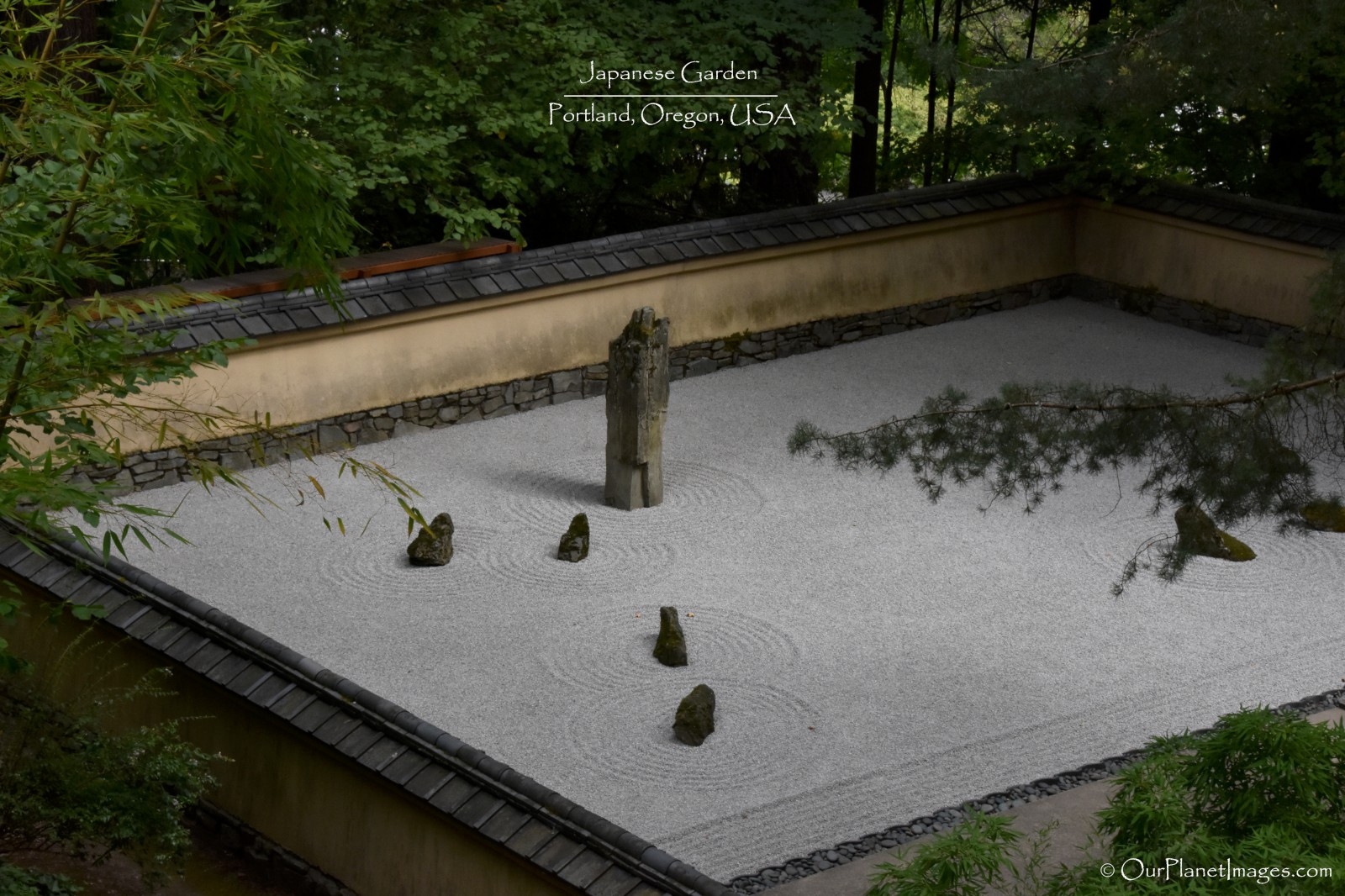
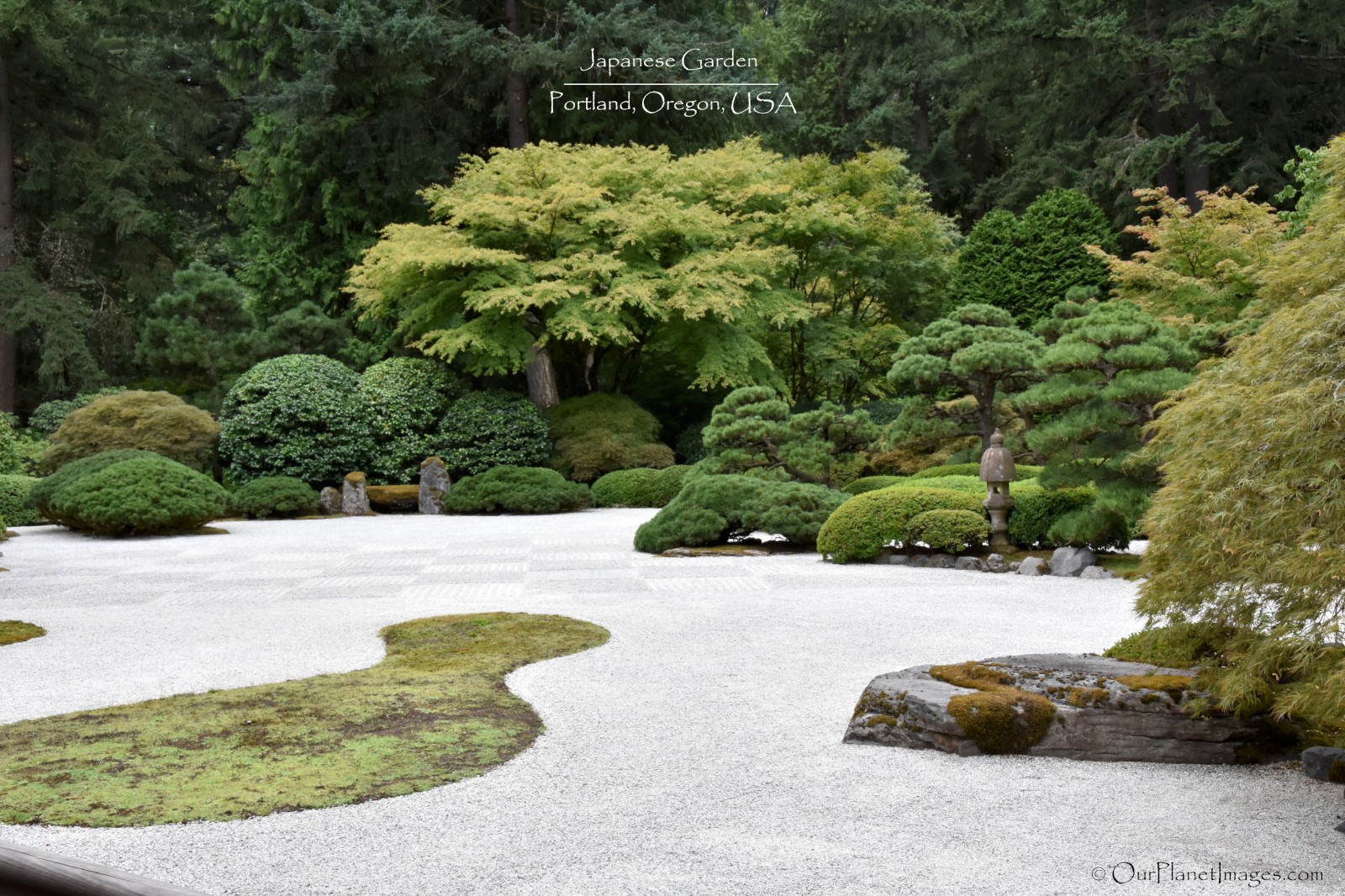
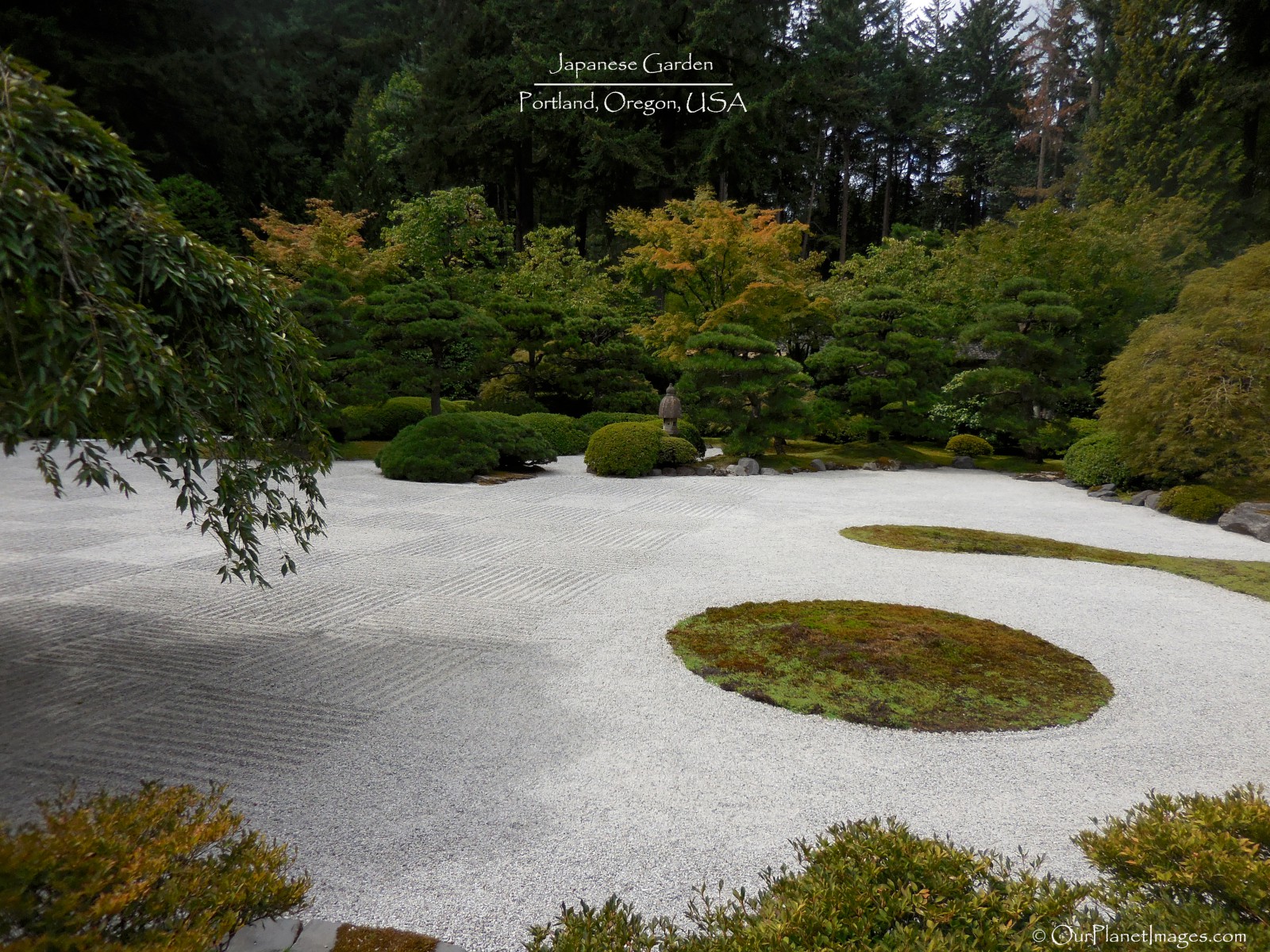
Bridges (designed for places to stop and admire the beauty of the landscape)
The bridges in the Portland Japanese Garden are definitely places that you want to stop and admire the beauty. The photos below are of the same bridge from two different directions which shows the beauty of everything around the bridge.
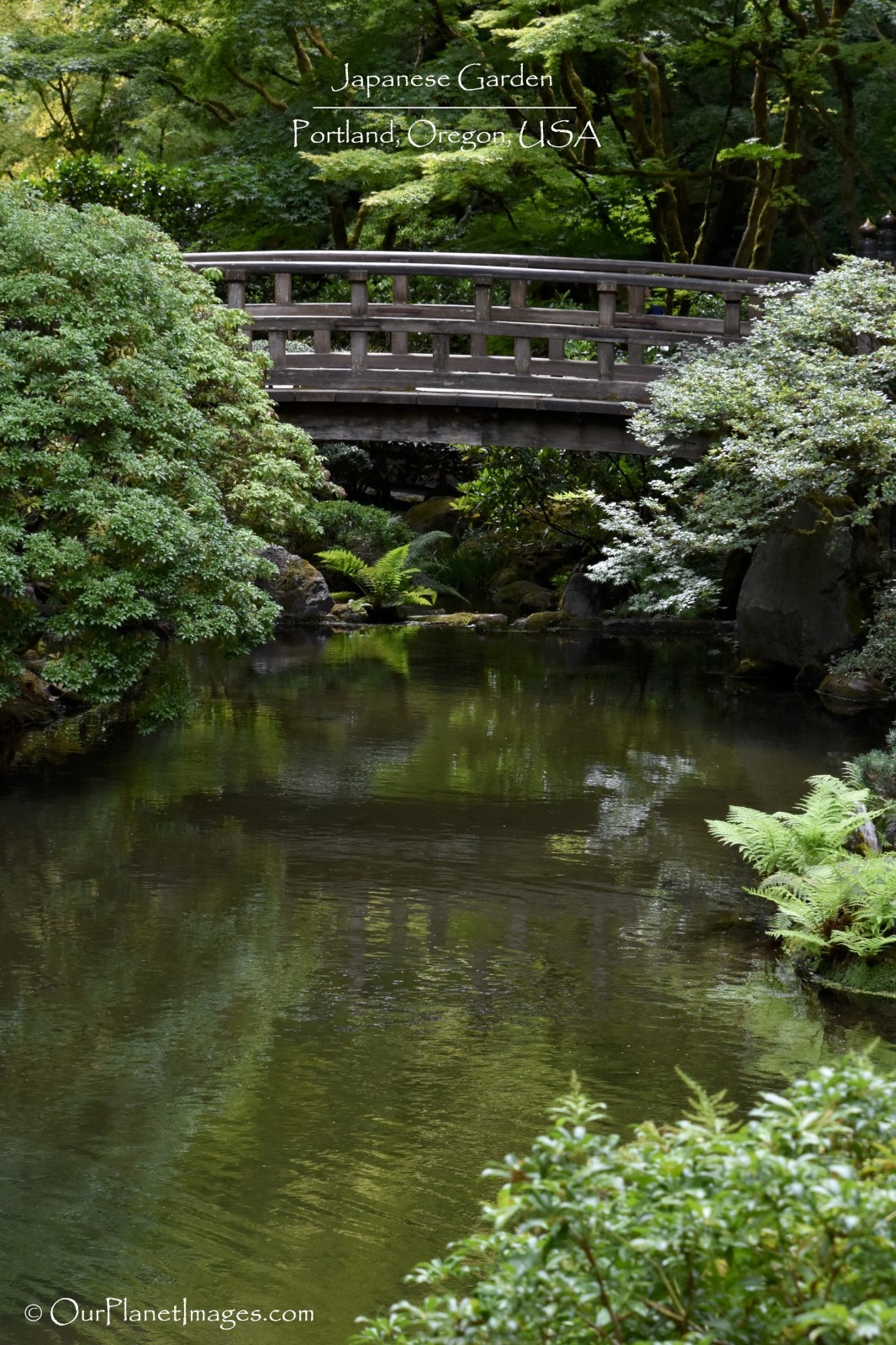
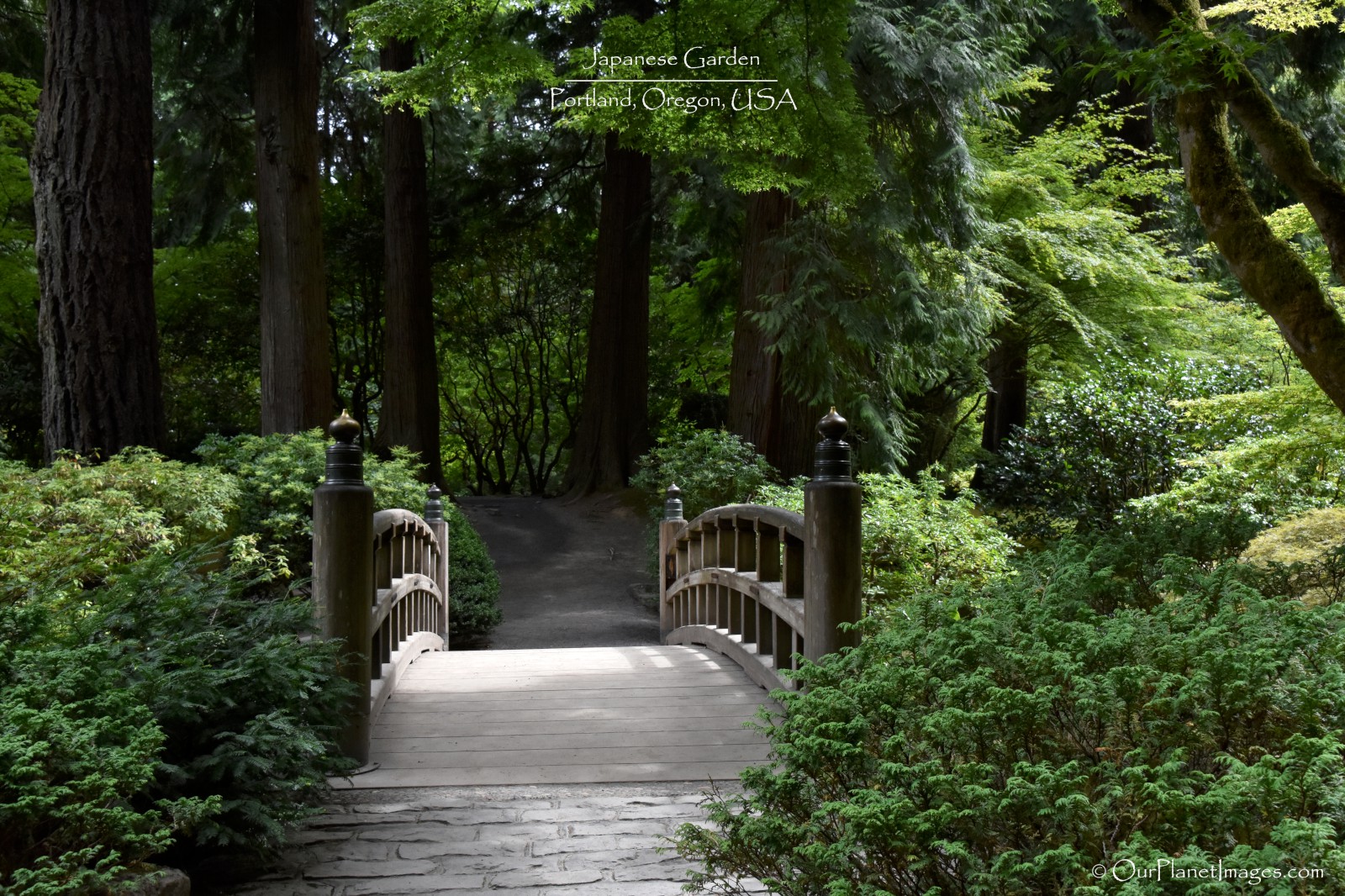
Plants (associated with moving thoughts and the universal forms of life)
Plants in a Japanese Garden are shaped in the same way that bonsai tree are shaped. They are shaped to the form that is needed to match the effect that is desired. Some of the shapes of trees in the Portland Garden are spectacular. Their branches twist and curve erratically making you wonder the story of why they became that way but the form of the trees seem to fit perfectly with their location.
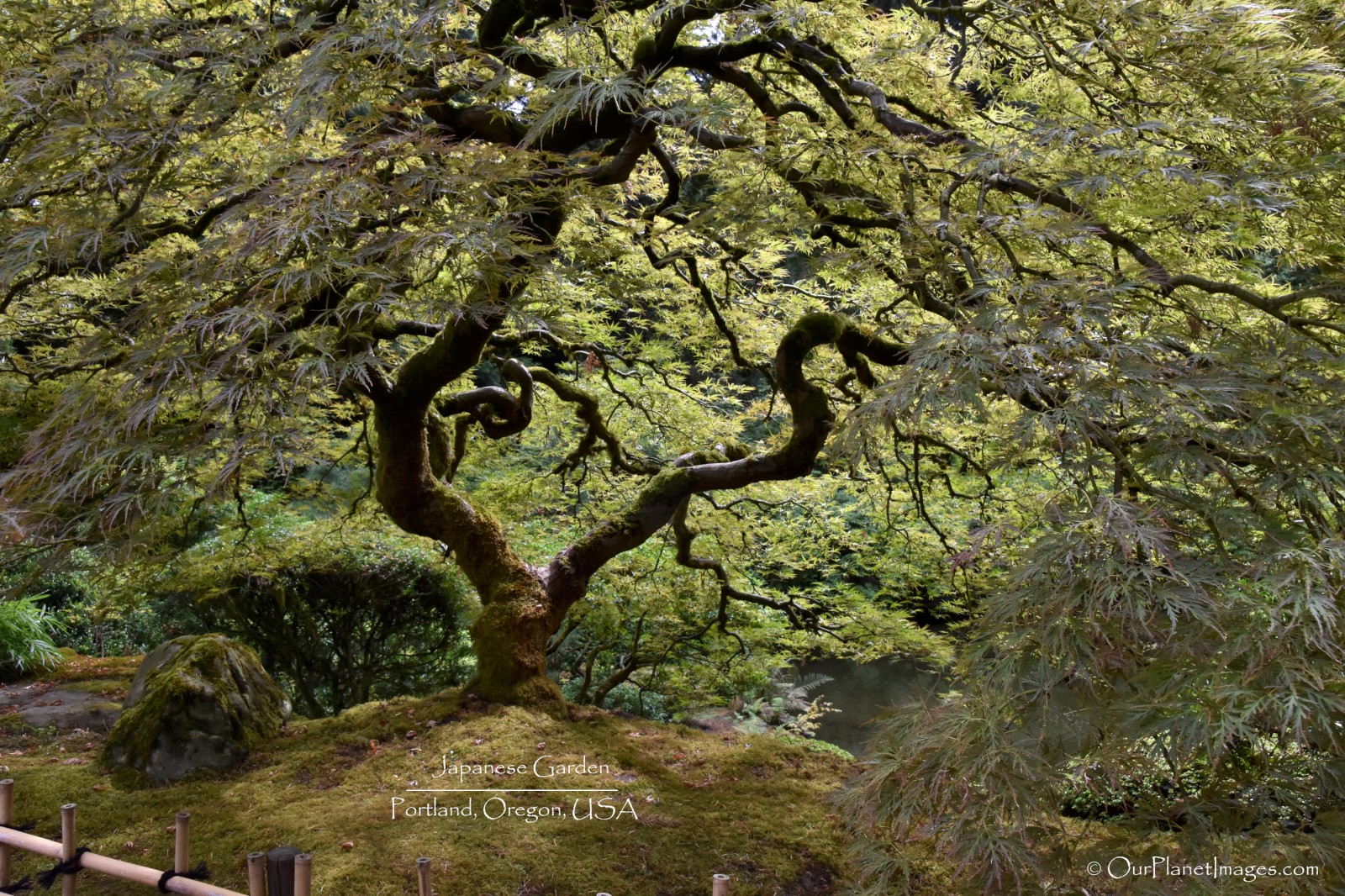


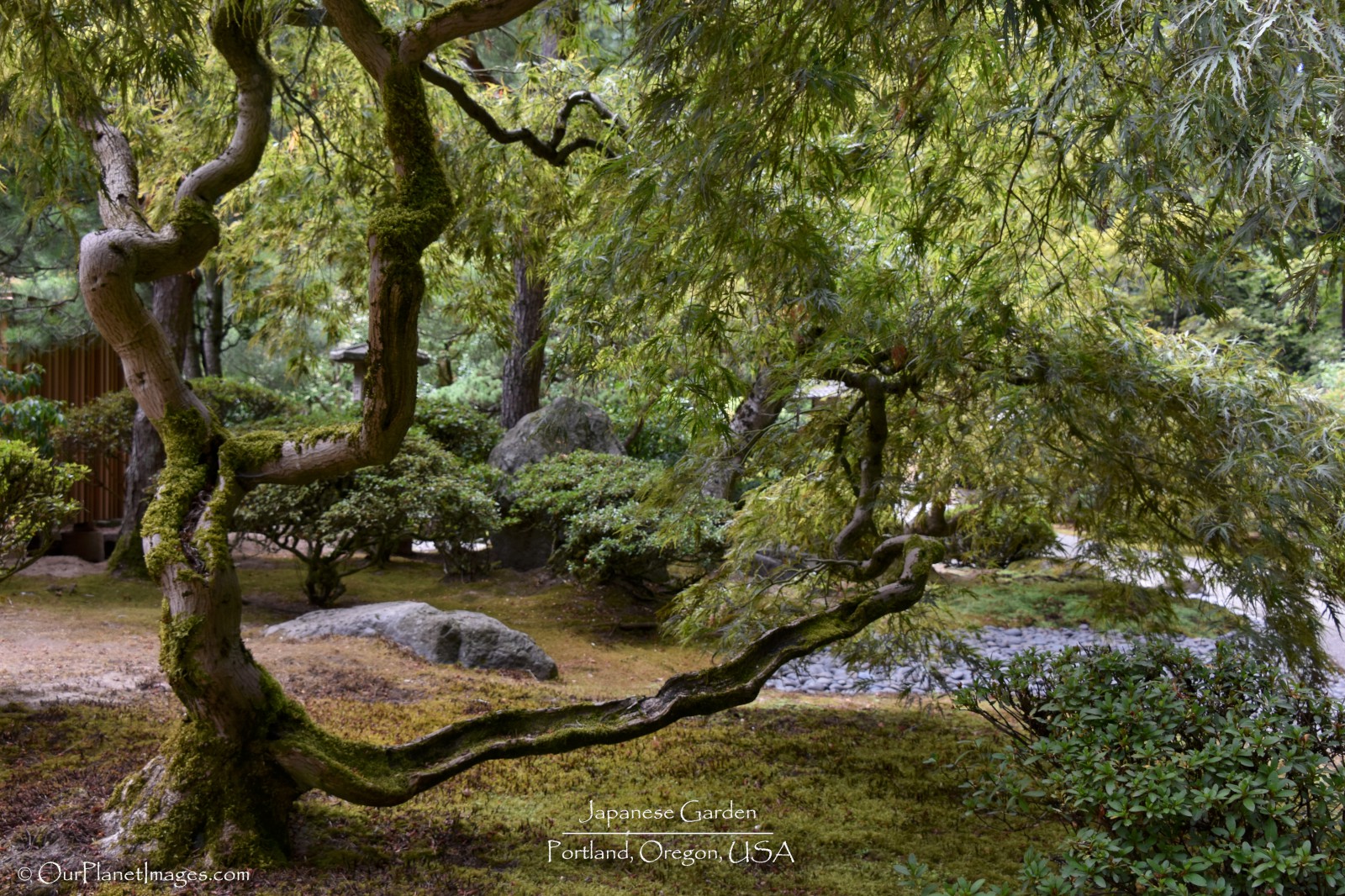
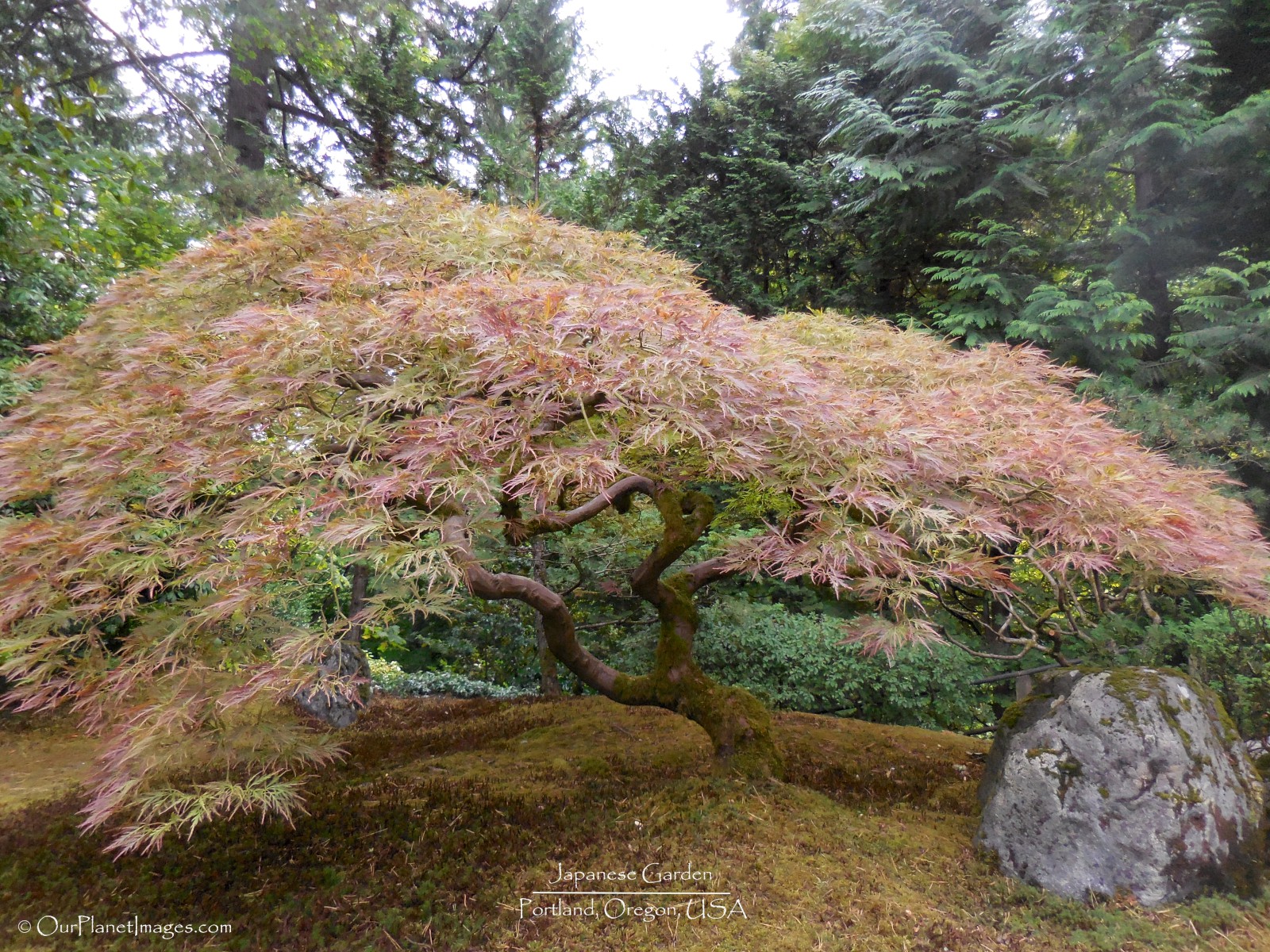
It is easy to get awestruck with the overall picture of the garden but some of the little details are equally pretty. An example of this are the two following pictures of the leaves of the trees.
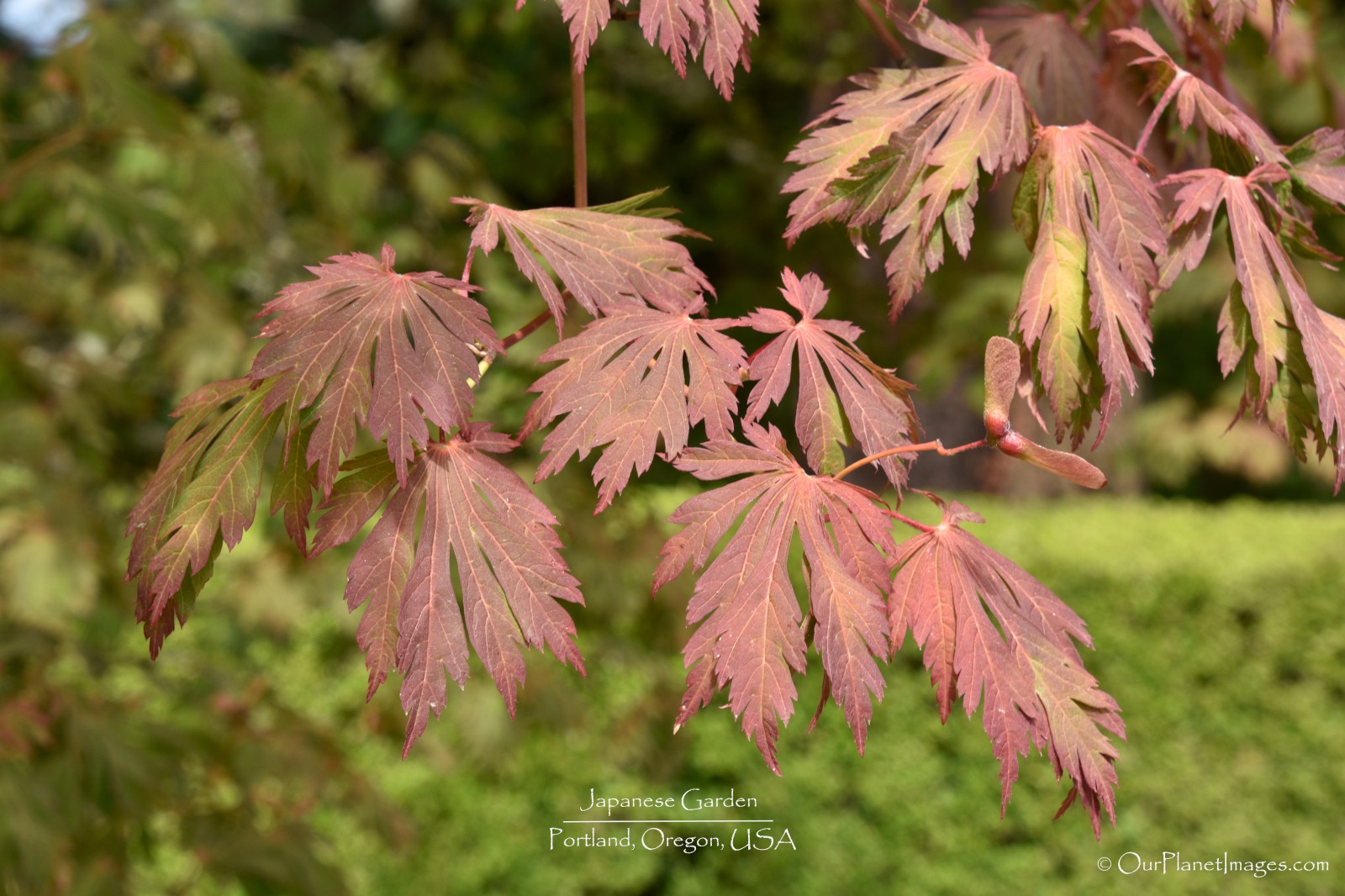
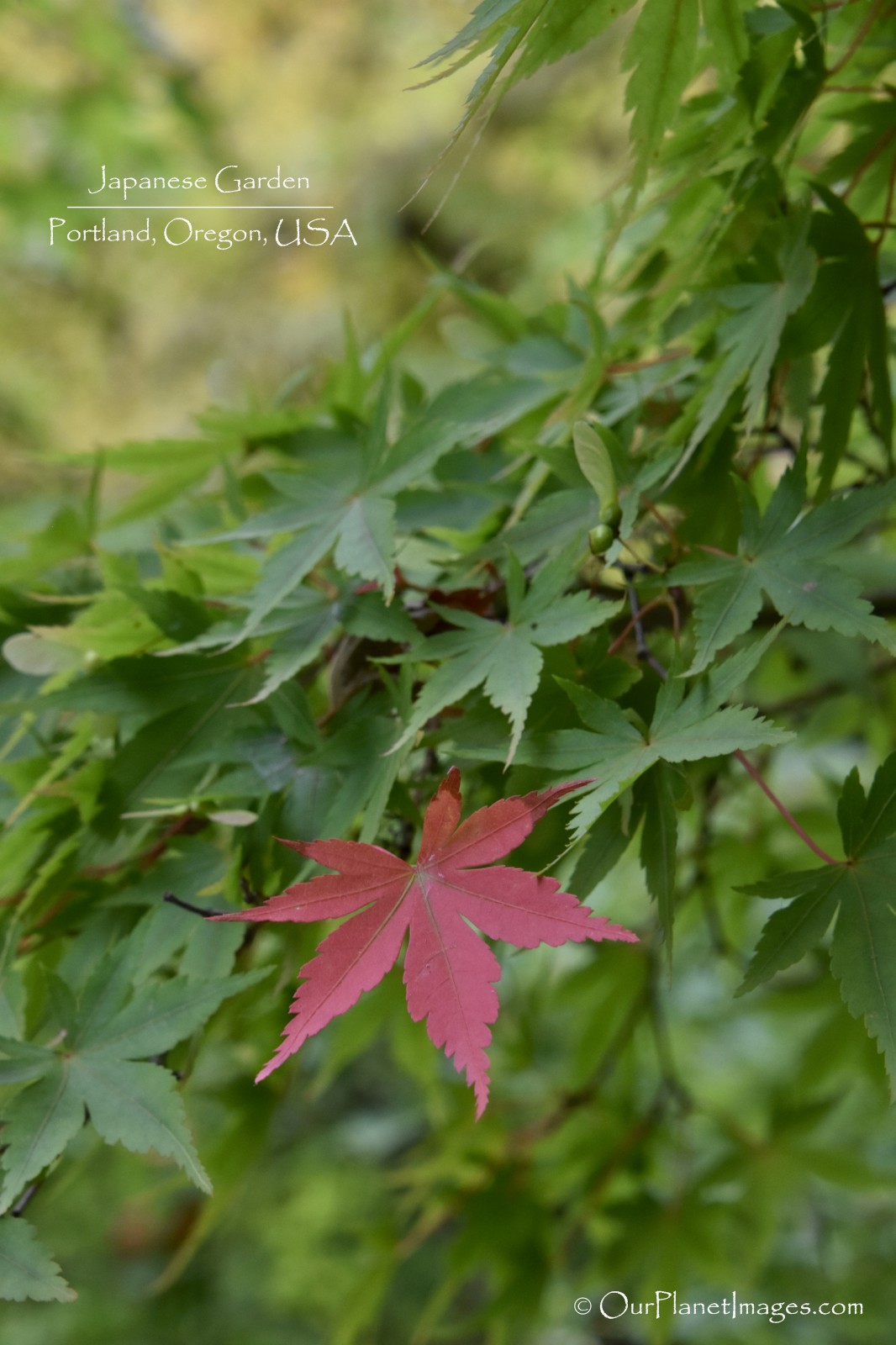
Kio (a symbol of strength and perseverance)
Koi are known as “living flowers” because of the variety of colors that they can be and they create a flash of color to a shallow pond. The photo below is one of my favorite because the gold color of the koi contrasts with the darkness of the water of the pond along with the bright green of the fern. The koi almost looks like it is flying instead of swimming.
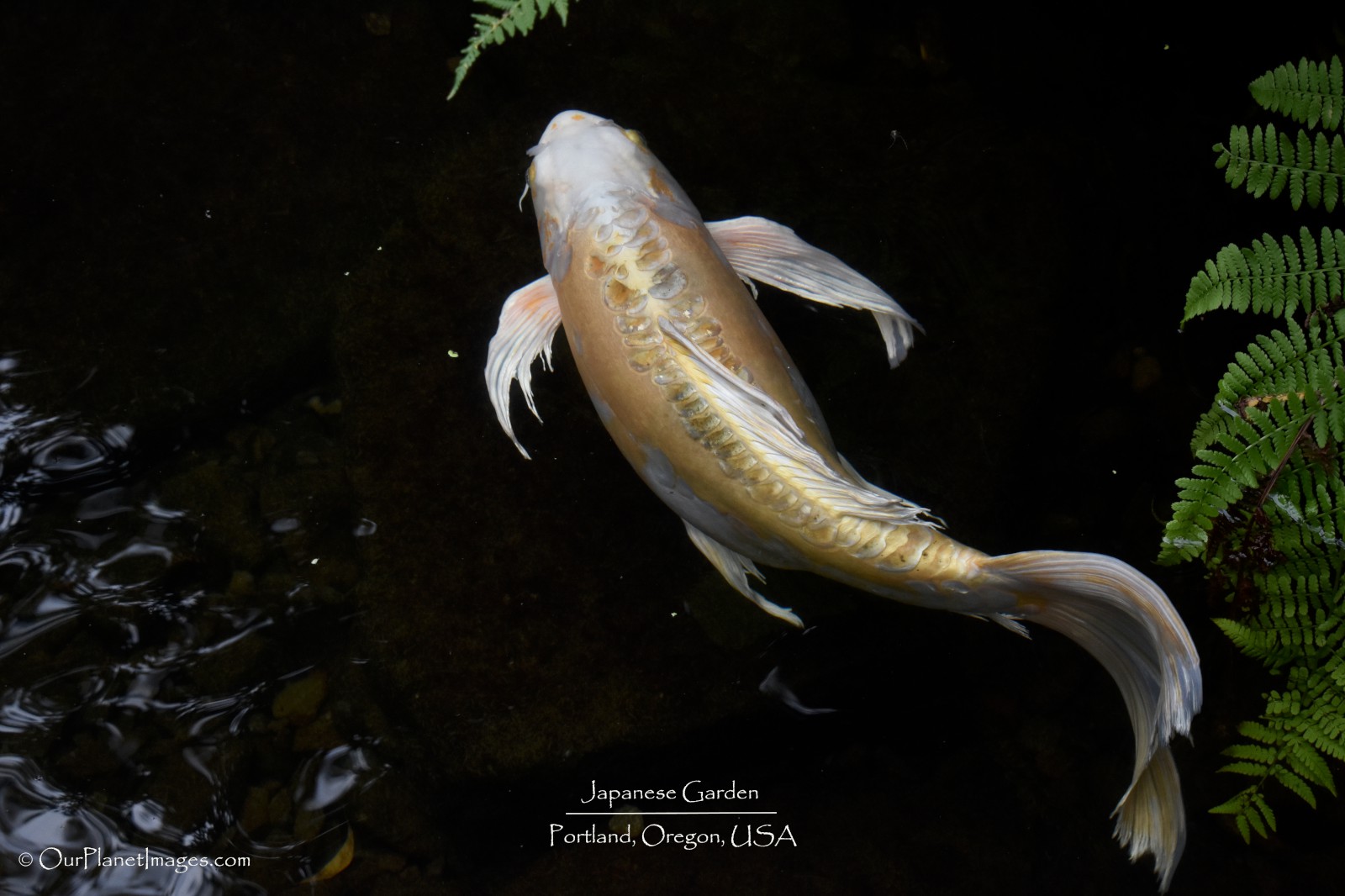
Special Decorations
The garden is spectacular by itself but as you walk through the garden you will notice some special decorations. Some of the decorations are Japanese figures and others just appear to be strictly for decoration. I selected two just to give an example of these special decorations.
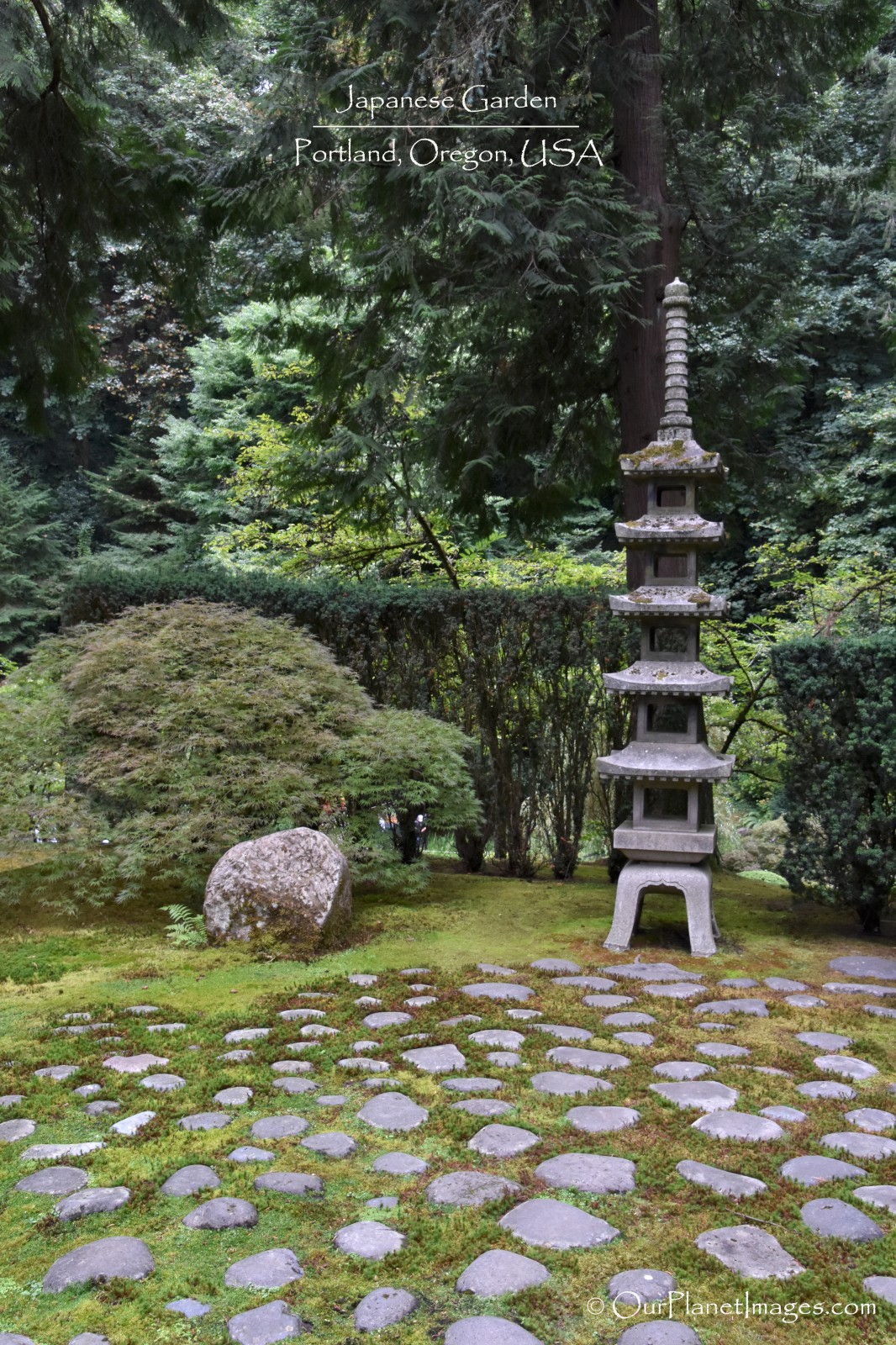
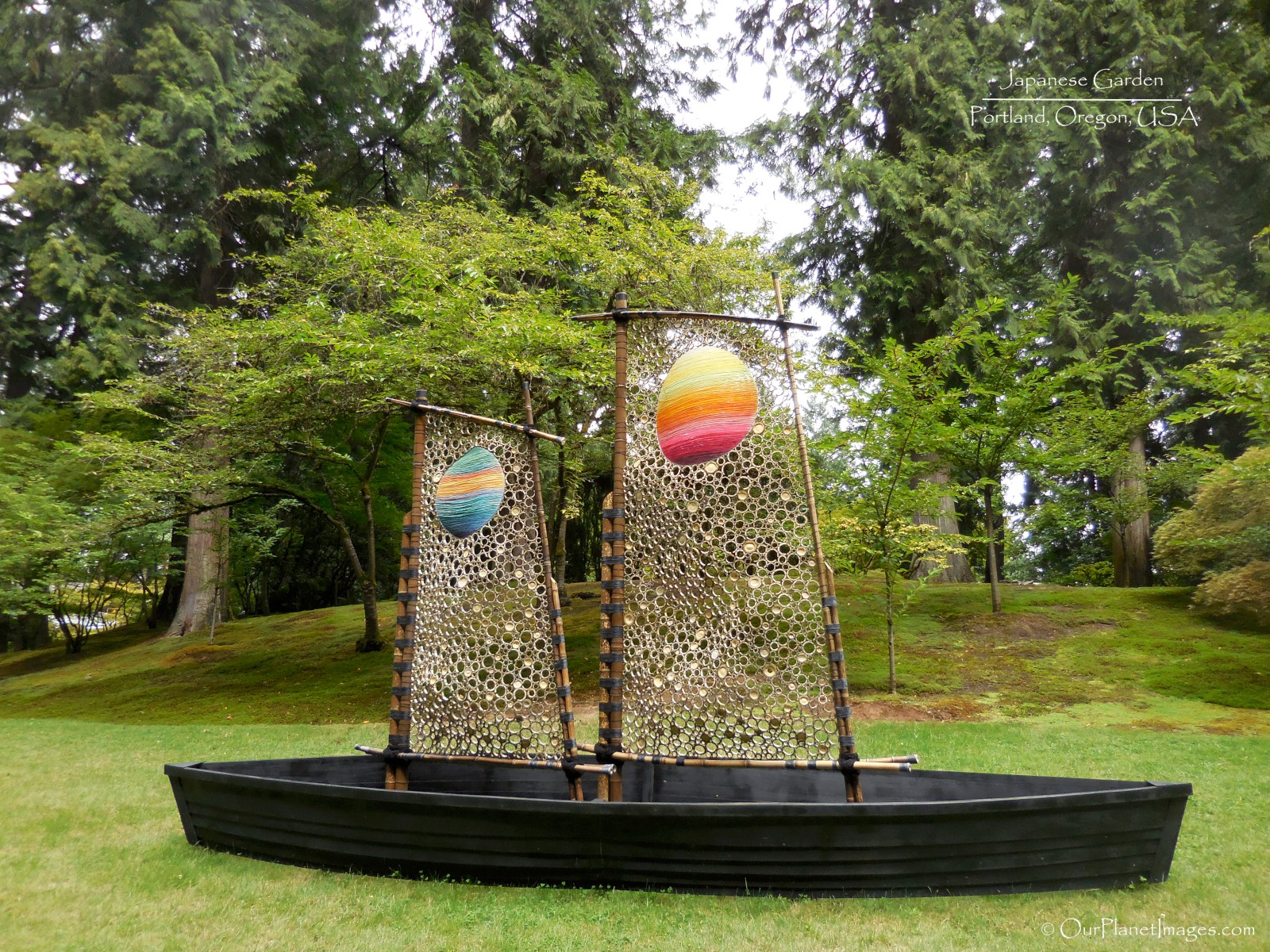
The Portland Japanese Garden is a wonderful garden. It is easy to spend several hours wandering along the paths and stopping to relax and get a break from the fast paced daily activity. It was one of my favorite places on my visit to Portland.
